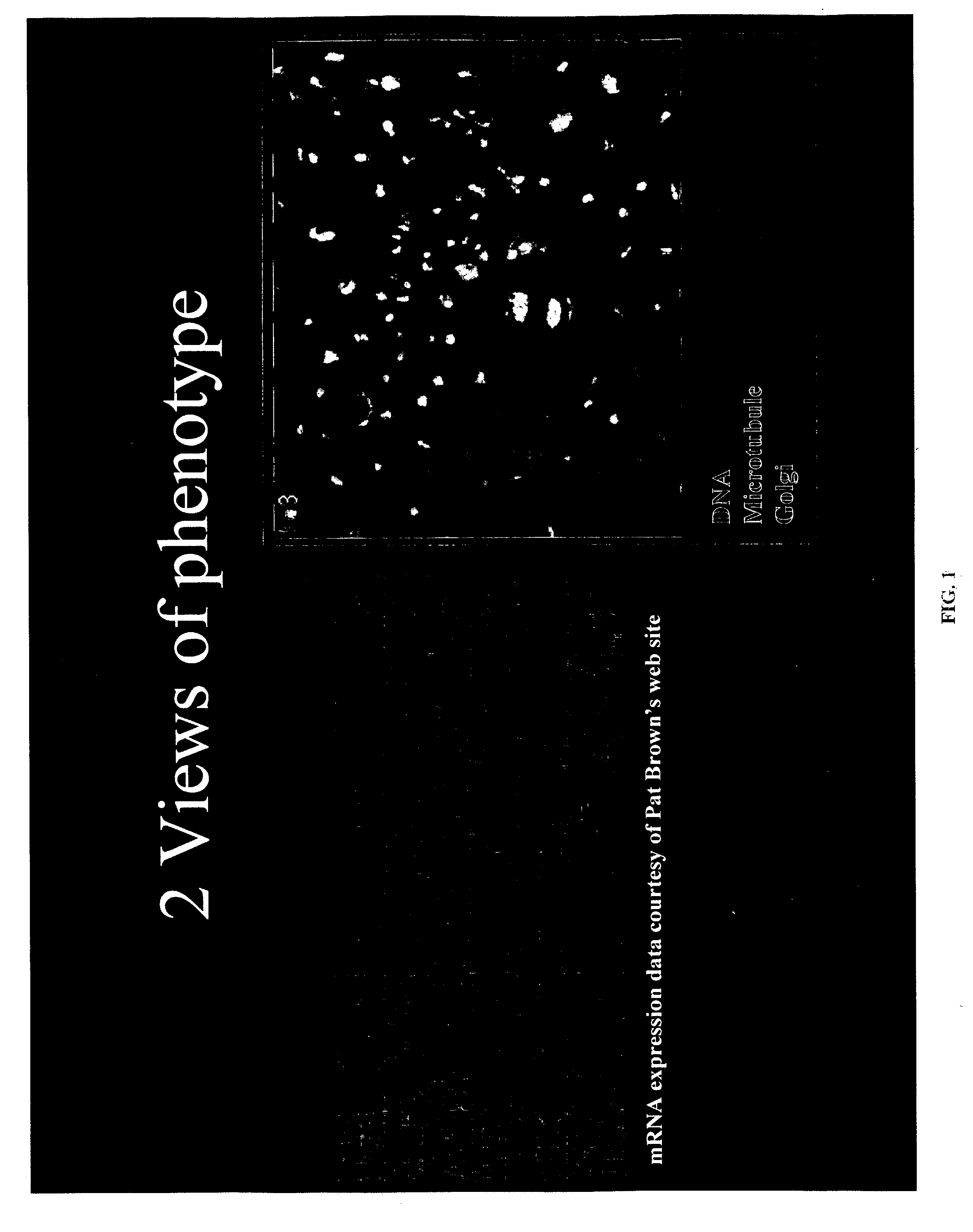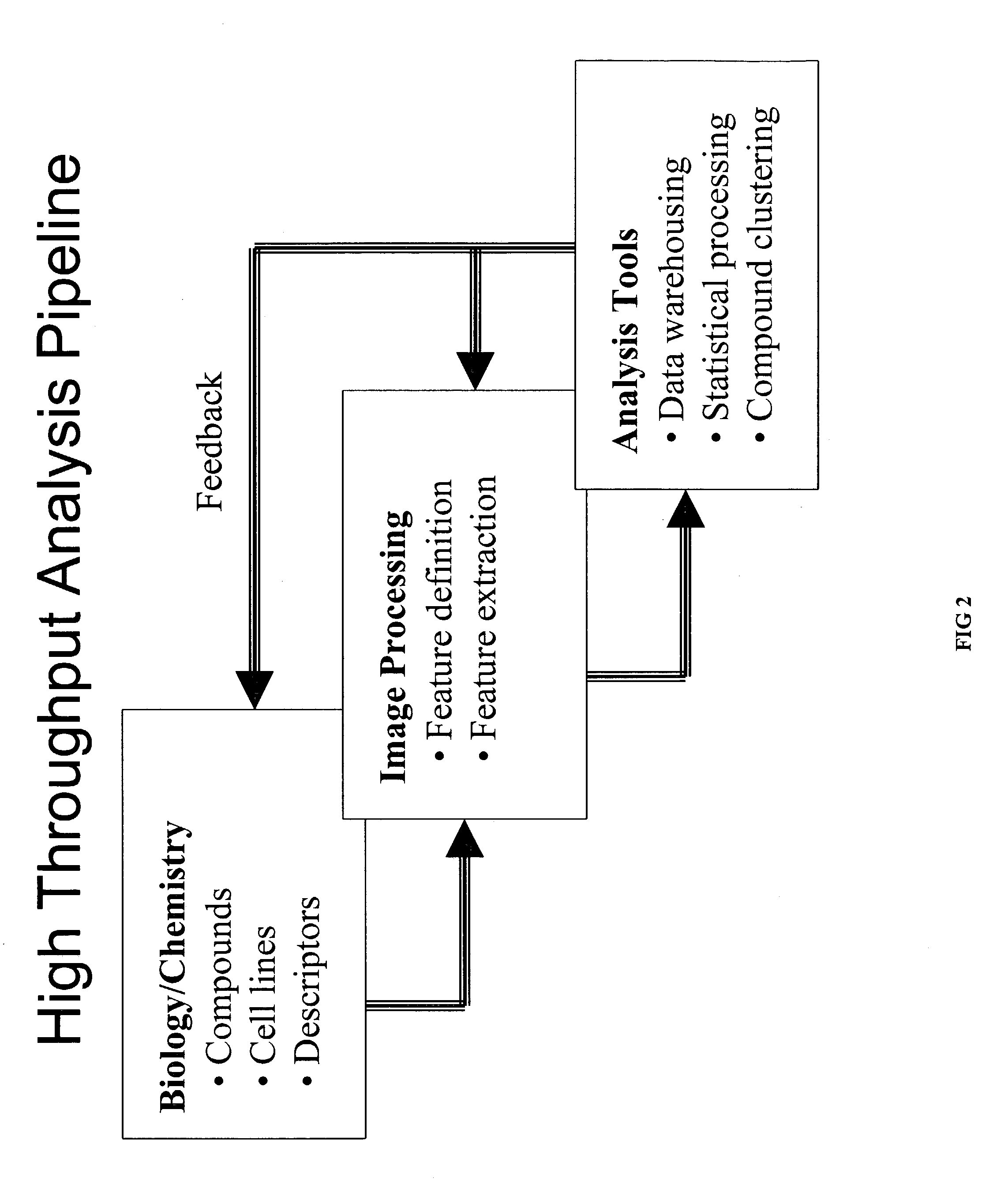Computer-assisted cell analysis
a technology of assisted cell analysis and computer assisted cell, applied in image analysis, image enhancement, instruments, etc., can solve the problems of inability to quantify, cost and time consumption, etc., and achieve the effect of reducing the number of cells, reducing the number of nuclei, and high throughput screening
- Summary
- Abstract
- Description
- Claims
- Application Information
AI Technical Summary
Benefits of technology
Problems solved by technology
Method used
Image
Examples
examples
[0064] To determine the reproducibility of cytological profiling, a set of 60 chemical compounds of known activity or mechanism of action were contacted with NCI 60 cells grown in 384-well plates. Each of the compound was administered to the cells at 16 different concentrations. After 20 hours, the cells were imaged by taking 4 images per well with a 20× objective (approximately 400 cells). Two imaging replicates and two full experimental replicates were obtained resulting in 8 images per well and 16 images for each compound / concentration combination. These images (approximately 120 GB of image date) were then used to extract approximately 6 GB of numerical data. These numerical data was then analyzed using statistical analysis such as K-S statistics and clustering to look for correlations and trends among the 60 compound tested. The data was also used to test the reproducibility and reliability of cytological profiling.
[0065] 384-well plates were seeded with NCI 60 cells. One of 6...
PUM
 Login to View More
Login to View More Abstract
Description
Claims
Application Information
 Login to View More
Login to View More - R&D
- Intellectual Property
- Life Sciences
- Materials
- Tech Scout
- Unparalleled Data Quality
- Higher Quality Content
- 60% Fewer Hallucinations
Browse by: Latest US Patents, China's latest patents, Technical Efficacy Thesaurus, Application Domain, Technology Topic, Popular Technical Reports.
© 2025 PatSnap. All rights reserved.Legal|Privacy policy|Modern Slavery Act Transparency Statement|Sitemap|About US| Contact US: help@patsnap.com



